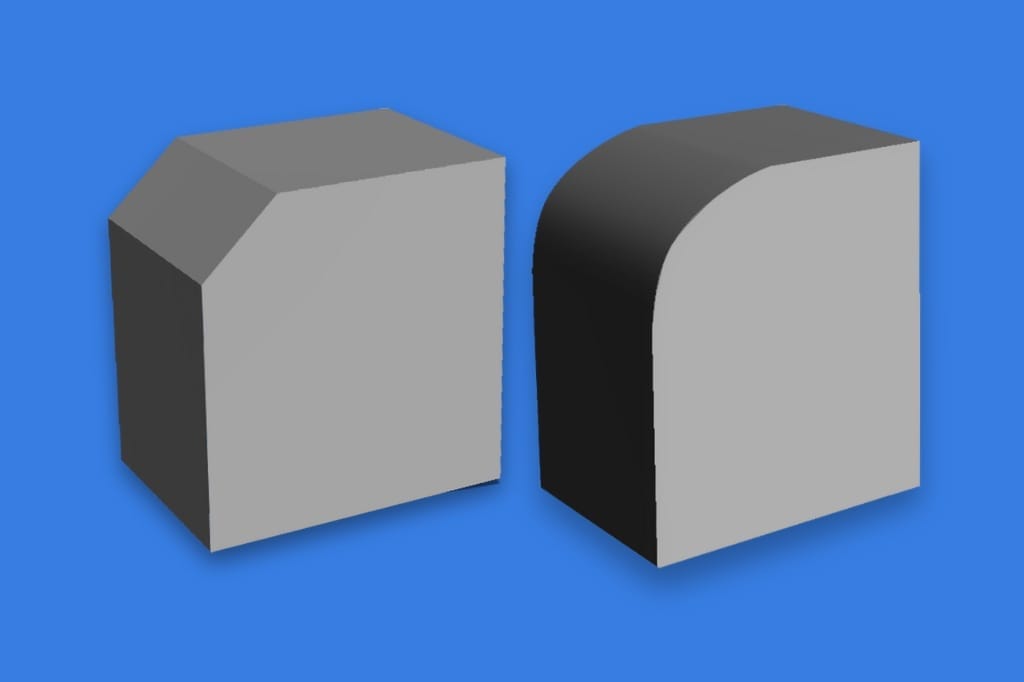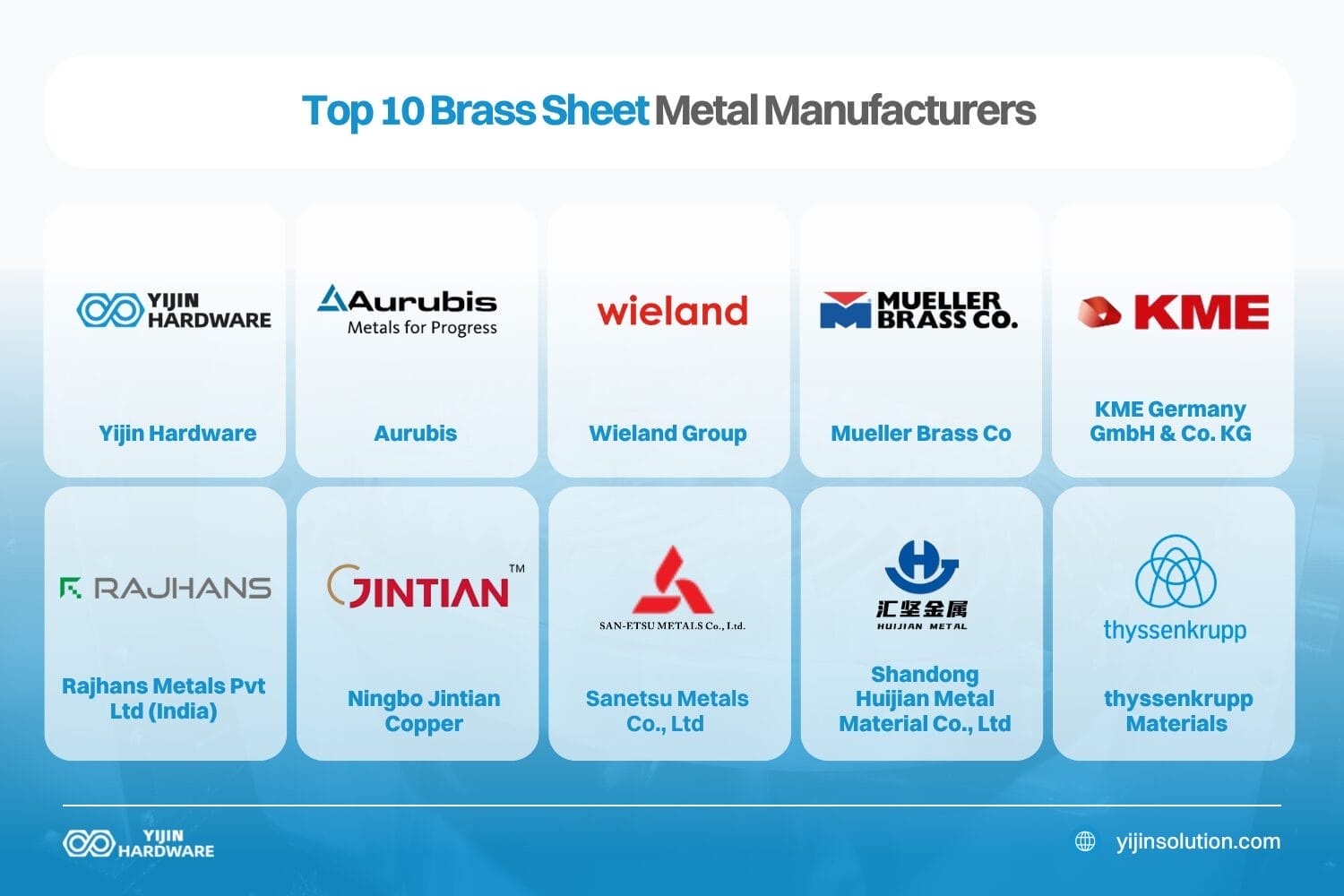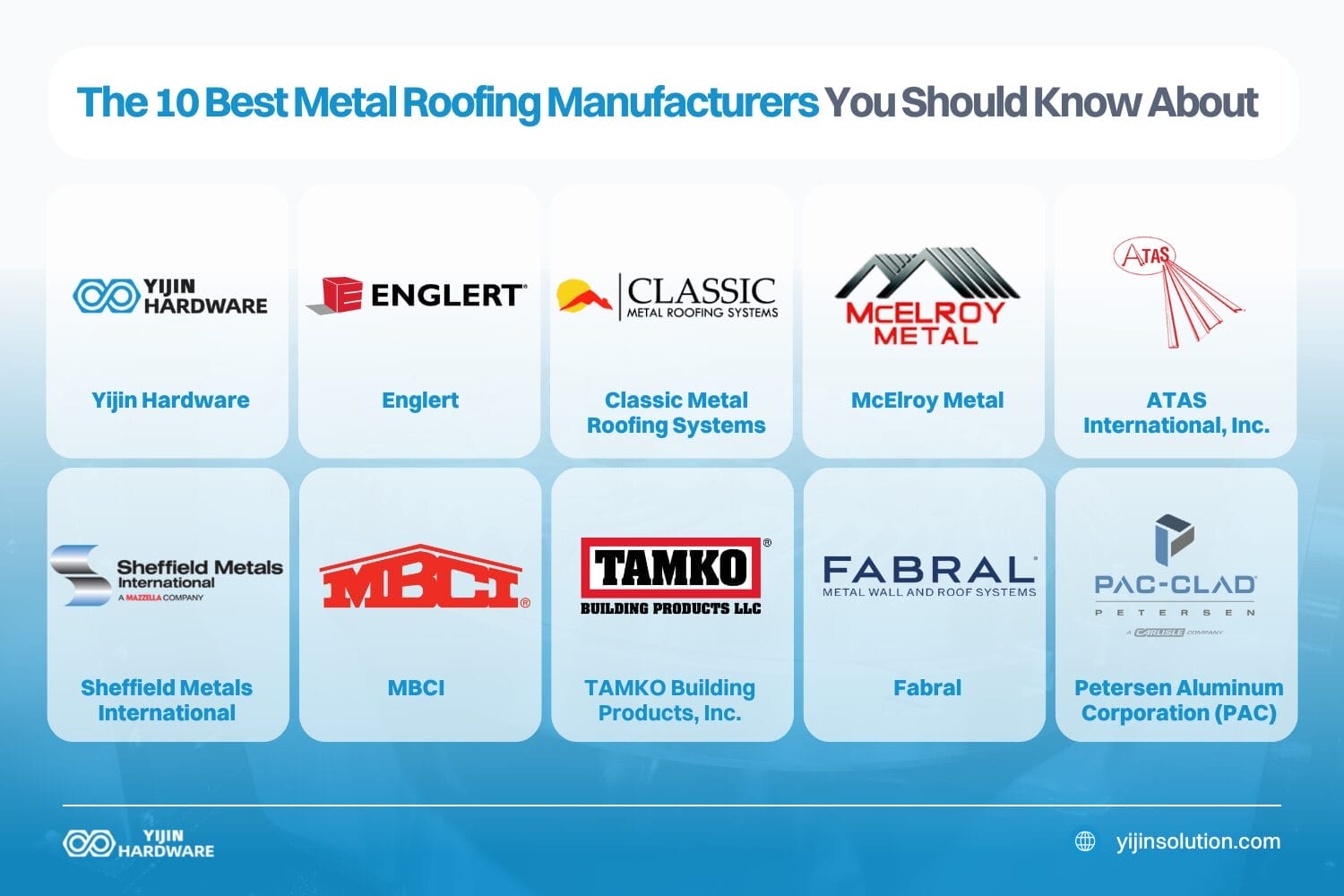The Main Difference Between Fillet and Chamfer
The main difference between a fillet and a chamfer lies in their shapes, purposes, and manufacturing applications:
- Shape: A fillet has a rounded edge that connects two surfaces, while a chamfer is an angled or sloped edge.
- Purpose: Fillets reduce stress concentrations, enhance durability, and improve aesthetics. Chamfers deburr edges, aid in assembly, and reduce manufacturing costs.
- Manufacturing Complexity: Fillets are more complex to machine, requiring specialized tools, whereas chamfers are simpler and faster to produce.
- Applications: Fillets are ideal for high-stress parts, consumer products, and fluid dynamics. Chamfers suit low-stress components, fasteners, and cost-effective assemblies.
Key Takeaways of the Article
- Fillet and Chamfer Definitions
- Chamfered and Fillet Edges Explanation
- Why do we need chamfer and fillet?
- Difference Between fillet and chamfer
- How to choose fillet and chamfer?
What is fillet?
In simple words, a fillet is a rounded corner. It is a smooth transition between the machined parts to make the edges flawless. In fillet, machinists connect the two straight edges. Next, you must be thinking why it is important?
Why are Fillets Important?
- Stress Reduction: Fillets help distribute stress equally across the metal machined parts. This greatly helps control stress concentration and potential fractures.
- Improved Appearance: With fillets, you can give excellent surface finishing in CNC machining.
- Enhanced Functionality: Fillets can significantly control the sharp edges, which can damage the other parts.
Types of Fillets
- Convex Fillet: This type is incorporated on a big scale. In this fillet type, you make the rounded corner bulges outwards.
- Concave Fillet: It is opposite to the convex fillet, the corner curves inwards.
- Miter Fillet: This is a complex process. In miter fillet, you usually sharp and cut the corners at a given angle and join them to manufacture a perfectly smooth round edge.
Fillet Radius
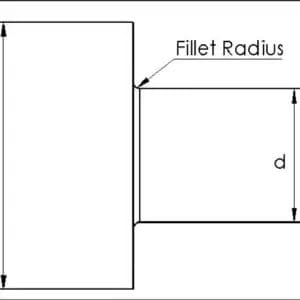
The best method for measuring the fillet radius is to figure out the distance from the middle to the curved position. The rule is pretty simple: the larger the radius, the bigger the rounded edge will be.
Let us understand using a formula:
C = 2 π r /: 2 π
Where:
- RRR is the radius of the fillet,
- CCC is the circumference of the circle
For example, if you’re measuring a given partial curve (arc length), and you have the subtended angle calculations, the formula would adjust to:
R=θL
Where:
- LLL is the arc length,
- θthetaθ is the central angle.
Fillet Machining
Fillet machining is the process of executing fillers incorporating end mill and ball nose cutting tools. What kind of tool and fillet is perfect for any project? It depends on two factors: machining tools and fillet radius. Simultaneously, the shape of the part during the design process is also important.
Example of a Fillet
Imagine you have a square block and round the corners. It is done. You’ve created fillets.
What is chamfer?
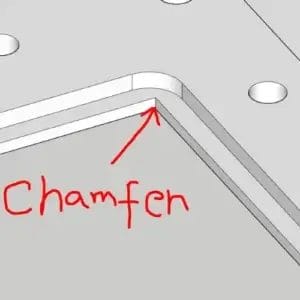
If a machine part has bevelled edge, it is a chamfer. In cnc machining process, it is formed by cutting a small portion of the material to give a sloop surface.
Why are Chamfers Important?
- Deburring: Chamfers deliver excellent results for deburring the finished parts. With chamfers, it is pretty convenient to sharp the edges and improve custom parts’ surface finishing.
- Assembly: Chamfers can reduce friction among different parts, making it easy to assemble them. If these parts do not have smooth edges, they can damage each other. Chamfers significantly improve the parts assembly by reducing friction and preventing interference.
- Strength: In some applications, parts need to deliver equal strength. Chamfers can do that perfectly. They reduce stress concentration and prevent fatigue.
Types of Chamfers
- Single-angle Chamfer: In this type of chamfer, the metal is cut with a single angle. No multiple angles are involved. This method is best for less complex shapes.
- Double-angle Chamfer: Multiple-angle engagement means the part is complex. A dual chamfer removes material from two different angles.
Chamfer Angle
You can classify the chamfer angle between the chamfered surface and the original surface of the part.
Comparison of Chamfer and Fillet Angles
| Feature | Chamfer Angle | Fillet Angle |
| Definition | The angle between the original surface and the beveled edge. | Two curved surface angle |
| Typical Values | 30°, 45°, 60° | Varies following design requirements and manufacturing constraints. |
| Purpose | Deburring, assembly, and strength. | Stress reduction, appearance, and function. |
| Shape | Sloped or angled edge. | Rounded corner or transition. |
| Machining Process | End mills, chamfer tools. | Ball nose end mills, corner rounding end mills. |
| Common Applications | External edges, holes. | External and internal edges. |
Chamfer Machining
End mills and drill bots are two popular tools that are incorporated to manufacture chamfers. Which tool and machining is required depends on the shape and angle of the chamfer.
What Are Chamfered Edges?

Chamfers are angled or sloped edges, often used for:
- Deburring: Removing sharp edges to prevent injuries and improve surface finish.
- Assembly: Reducing friction and preventing interference during assembly.
- Strength: Distributing stress on the absolute equal pattern to enhance part strength.
Types of Chamfers:
- 45-degree Chamfer: Typically used for drilling operations to remove burrs and allow bolts to sit flush.
- 60-degree Chamfer: Less effective for stress reduction but often used as a lead-in for bolts and screws.
Fillets, which are rounded corners, play a significant role in improving the durability and aesthetics of parts. For example, brass components often include carefully machined fillets to reduce stress concentrations and enhance their functionality. Working with specialized brass cnc machining services ensures precision in crafting these features.
Fillets are rounded corners that:
- Reduce stress concentration: Prevent fractures and accelerate parts’ quality.
- Enhance aesthetics: You can get an impeccable surface finish appearance.
- Improve functions: Prevent sharp edges from catching other components.
Choosing Between Chamfers and Fillets:
The decision between chamfers and fillets incorporates some crucial factors such as:
- Design requirements: Pre-designed appearance, functions, and strength of the part.
- Manufacturing capabilities: The available tools in the inventory and machining processes for creating chamfers or fillets.
- Cost-effectiveness: The potential cost implications for bulk and small orders.
When to Use Chamfers:
- Holes for bolts or screws: Chamfers significantly improve the smooth surface.
- External edges: Chamfers effectively break sharp corners and reduce the risk of injuries.
When to Use Fillets:
- External edges: Fillets can boost appearance and provide stress relief.
- Internal edges: You can also use fillets to avoid sharp corners that are vulnerable in the machine.
Fillet Radius:
The choice of fillet radius depends on:
- Design requirements: The desired level of stress relief and surface finishing.
- Manufacturing constraints: The flaws and performance limitations of the machining process.
When You Need a Chamfer or Fillet?
Like manufacturing any part, the design stage is crucial. Similarly, fillet and chamfer play a decisive role in CNC machined parts manufacturing. Your decision will impact the performance fo the parts. Let’s explore the details in detail.
Characteristics of Chamfers
- Angle: The angle of a chamfer can vary. While 45 degrees is common, it can be modified following specific design needs.
- Shape: Chamfers create a flat edge which is opposite to round edges. It significantly improves the part’s appearance.
- Manufacturing: Chamfers are straightforward to CNC machines. It is an affordable option which does not incur overhead costs.
When to Use a Chamfer?
- Low-Load Parts: Chamfers are best for parts that do not bear extra load or stress. They assist in reducing sharp edges; however, they are counted as low-profile in terms of strength.
- Effortless Assembly: Chamfers can fit the parts very tightly. They significantly improve part alignment in the assembly process. Screws and pins are common examples.
- Low-Budget: Chamfers are a convenient, affordable, and less complicated process for manufacturing CNC machined parts rather than fillets. In high-volume manufacturing, this is one of the most budget-saving methods for reducing cost per part.
Characteristics of Fillets
- Radius: Fillets have a specific radius that defines how rounded the edge will be. The radius can be adjusted to meet design requirements.
- Stress Distribution: Fillets are good at reducing stress concentrations, which improves the life and performance of metal parts.
- Aesthetic Appeal: Fillets provide a softer, more refined shape to components. It enhances the visual appeal, which is considered best for consumer products.
When to Use a Fillet?
- High-Load Parts: Fillets are ideal for components that will bear significant stress or load. They help distribute forces more evenly, reducing the risk of failure.
- Visual Appeal: Fillets provide a polished and professional look. This approach is highly commendable for products where appearance is important, such as consumer electronics or automotive parts.
- Coating Application: Fillets have an expanded application area even paints and coatings. The rounded edges significantly reduce chipping and peeling, ensuring a more sustainable finish.
- Safety: Fillets can improve safety by eliminating sharp corners that lead to instantaneous injuries. This is essential for consumer products and professional tools.
- Fluid Flow: In fluid dynamics applications, fillets can accelerate flow characteristics by minimizing turbulence at corners. This is the most practical option for piping and fluid transport systems.
Fillet vs Chamfer: What’s the Difference?
Fillet
A fillet is a rounded edge that connects two straight edges. It’s like a smooth curve that bridges the gap between the two edges.
- Key Characteristics:
- Rounded shape
- Used to reduce stress concentration
- Often improves aesthetics
- Can enhance functionality
- Applications:
- Machined parts
- Castings
- 3D printed objects
- Product design
Chamfer
A chamfer is an angled edge cut at a specific angle, similar to a beveled edge.
- Key Characteristics:
- Angled shape
- Used to deburr edges
- Improve assembly
- Reduce manufacturing costs
- Applications:
- Sheet metal fabrication
- Machined parts
- Fasteners
| Feature | Fillet | Chamfer |
| Shape | Rounded | Angled |
| Purpose | Stress reduction, aesthetics, functionality | Deburring, assembly, cost reduction |
| Manufacturing complexity | More complex | Less complex |
| Cost | Generally more expensive | Generally less expensive |
Key Considerations When Choosing between Fillet and Chamfer
Stress and Strength
- Fillets: Great for parts that need to withstand a lot of stress. The rounded edges help spread out the force evenly.
- Chamfers are vulnerable to handling heavy loads. They are better suited for parts that won’t be under much stress.
Looks Matter
- Fillets: Smooth and curvy parts increase the visual appeal, especially in products you’ll use every day.
- Chamfers: Sharp and angled. Not as pretty, but can customize the design following the part shape.
Making it Easy
- Chamfers: Easier and cheaper to make. They’re quicker to produce.
- Chamfers: Also help parts fit together better. This is good for things like screw holes and pins.
Protection
- Fillets: Better for coatings and preventing rust. The rounded edges stop the paint from peeling.
- Fillets: Also help keep moisture away, which prevents rust.
Cost
- Fillets: Fillets incur more costs, but it can be an impactful investment to make stronger and reliable parts.
- Chamfers: Cheaper and better if strength is not your preference.
Best Design Solutions from Yijin Hardware
Yijin Hardware is the leading CNC machining service provider which provides custom design support for fillet and chamfer. You can order low and large-batch high-precision machine parts with complex and simple designs. Our company is equipped with the specialized tools and seasoned experts to carry out operations with a faster turnaround time.
FAQs
What is the difference between a taper chamfer and fillet?
Taper chamfer has a varying angle and features a conical shape, whereas a fillet has a rounded corner.
Is it easier to machine a chamfer or a fillet?
Chamfer are generally easy to machine because they have less complex shapes. They provide particular angle working, which reduces machining setup. On the other hand, fillet has multiple angle directions which incur more time and tools to make complex shapes.
Why is chamfer used?
Chamfer is sed to remove deburrs from the part, add good surface finishing, and also used for smooth assembly of custom parts.


